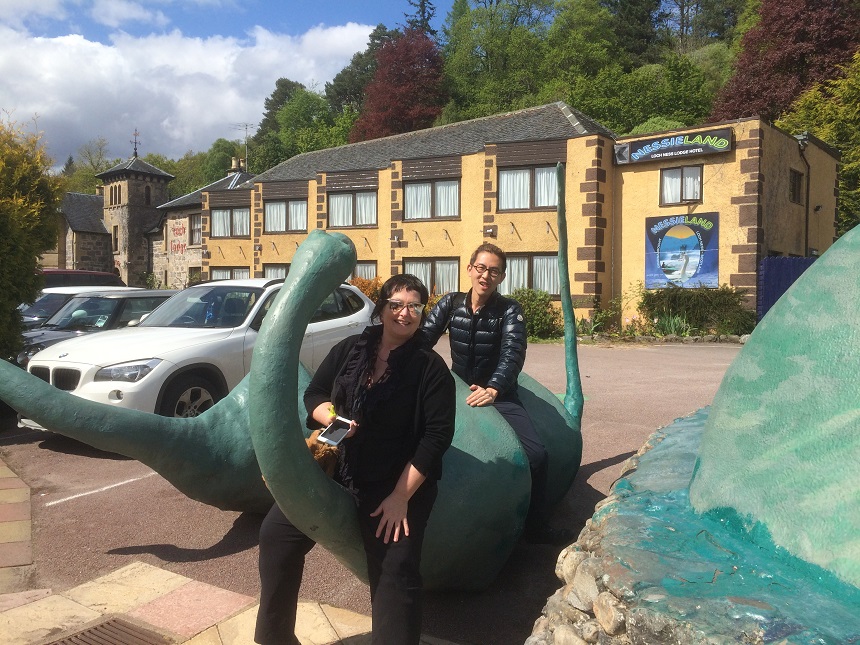MONSTER HUNTING ...
With the sun still shining brightly it was a fine day for showing Scotland off at its best. First stop was The National Trust for Scotland Visitor Center at Culloden battlefield. Since taking ownership of the Drambuie brand in late 2014 William Grants and Sons are now also proud custodians of the Drambuie Jacobite Collection. Consisting of over four hundred items ranging from historical documents, weapons, medallions the core of the collection is comprised of one of the finest collections of Jacobite period glassware in private ownership. A number of which are on display at Culloden to be enjoyed by visitors from around the world.
In January we undertook a new documentation and valuation of the items at Culloden but one glass was missed, hence our return visit. Decorated with Jacobean symbols such as the white rose in flower – representing King James, the old pretender. The fact that these fragile items have managed to exist for the past three hundred years is quite remarkable, even more so considering that back in the day possession of one would have seen the owner flung in the gaol, death or deportation to the colonies !
With the photography out of the way and Joan and Kun Ying having had a good opportunity to look over the rest of the exhibits and tour the battlefield itself we were able to set off on our circumnavigation of Loch Ness. Stopping off at the falls of Foyers is always a must before the locks at Fort Augustus.
With the waters of the loch shimmering in the glorious sunshine we were not lucky enough to see Nessie herself but Joan was able to grab some stunning landscape shots. Using a filter to enhance colour her photographs took on the sort of technicolor atmosphere reminiscent of picture postcards from the sixties and seventies. Joan’s interest in landscapes informs some of her work often using old prints created by some of the first colonial artists who arrived in Austrasia such as Joseph Lycett and Thomas Watling.

image by Joan Ross
Watling who was born in Dumfries in 1762 was a convicted banknote forger. Sentenced to fourteen years he was transported to Australia in 1791. Although he managed to escape the ship while in port in Cape Town he was quickly rearrested and eventually arrived in Sydney in October 1792. He appears to have been assigned almost immediately to the surgeon-general, John White, an ardent naturalist, who made extensive use of his artistic skill. When White left the colony in December 1794 it is thought that Watling may have been assigned to the judge-advocate, David Collins. There is positive evidence that at least some of the plates in Collins's An Account of the English Colony in New South Wales (London, 1798-1802) were taken from original sketches by Watling.

image by Watling

image by Lycett
The images produced by Watling, Lycett and others acted as a sort of pictorial propaganda depicting the colony as a pleasant fertile land tamed and ordered by European Civilisation. Of course the indigenous inhabitants were also depicted, sometimes with sensitivity but often inferred to be no more than part of flora and fauna through the perspective of the colonisers.
http://www.artionado.com/AustralianColonialArt/Convict%20timeline.html
